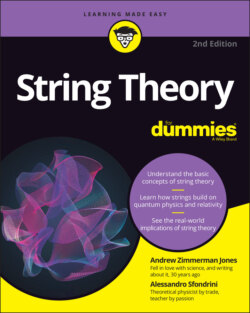Читать книгу String Theory For Dummies - Andrew Zimmerman Jones - Страница 100
Gravity: A great discovery
ОглавлениеWith the laws of motion in hand, Newton was able to perform the action that would make him the greatest physicist of his age: explaining the motion of the heavens and Earth. His proposal was the law of universal gravitation, which defines a force acting between two objects based on their masses and the distance separating them.
The more massive the objects are, the higher the gravitational force is. The relationship with distance is an inverse relationship, meaning that as the distance increases, the force drops off. (It actually drops off with the square of the distance — so it drops off very quickly as objects are separated.) The closer two objects are, the higher the gravitational force is.
The strength of the gravitational force determines a value in Newton’s equation called the universal constant of gravitation or Newton’s constant. A striking property of the universal constant of gravitation is that it is … well, universal. This means that its value is the same in New York, Tokyo, Mars, Alpha Centauri, or the Andromeda galaxy. This value is obtained by performing laboratory experiments and astronomical observations, and calculating what the constant should be. One question still open to physics and string theory is why gravity is so weak compared to other forces.
Gravity seems fairly straightforward, but it actually causes quite a few problems for physicists because it won’t behave itself and get along with the other forces of the universe. Newton himself wasn’t comfortable with the idea of a force acting at a distance, without understanding the mechanism involved. But the equations, even without a thorough explanation for what causes gravity, worked. In fact, the equations worked well enough that for more than two centuries, until Einstein, no one could figure out what was missing from the theory. More on this in Chapter 6.
